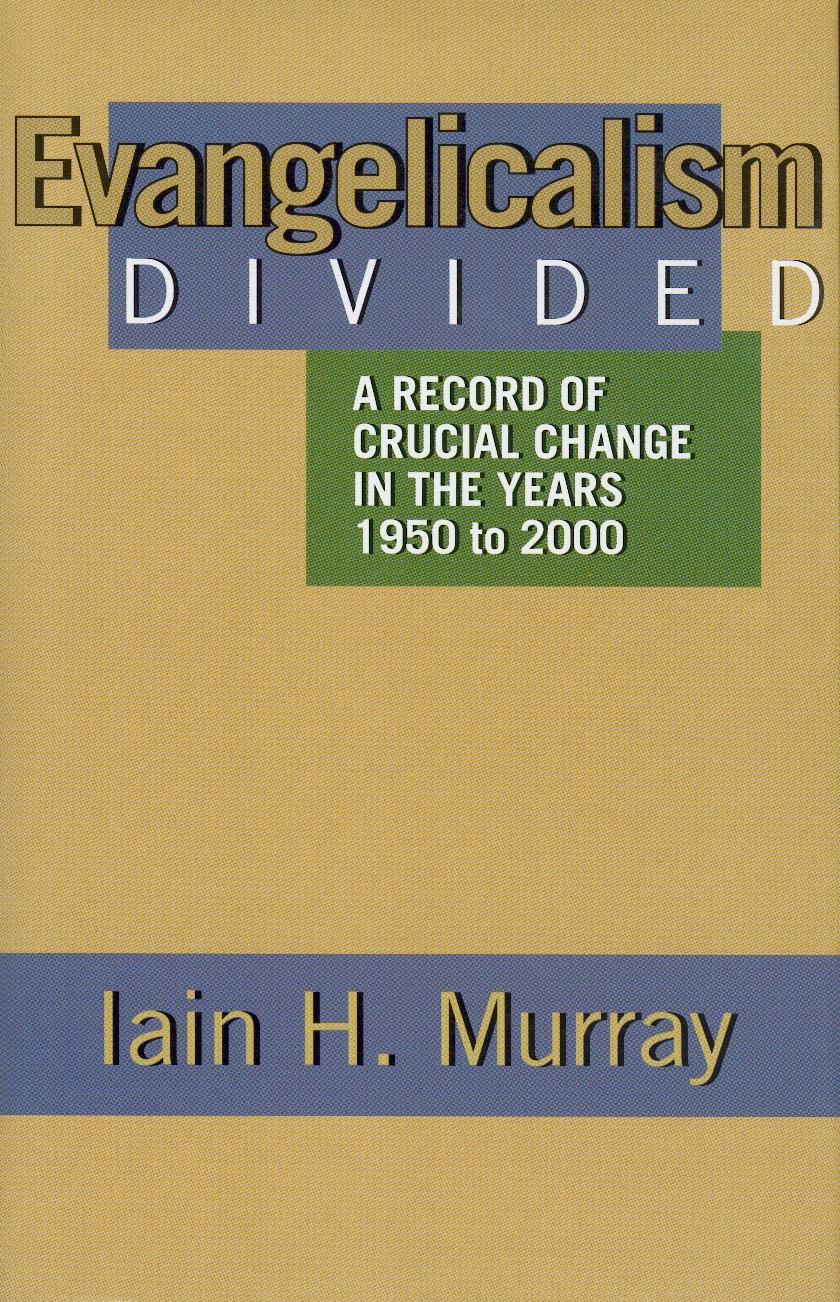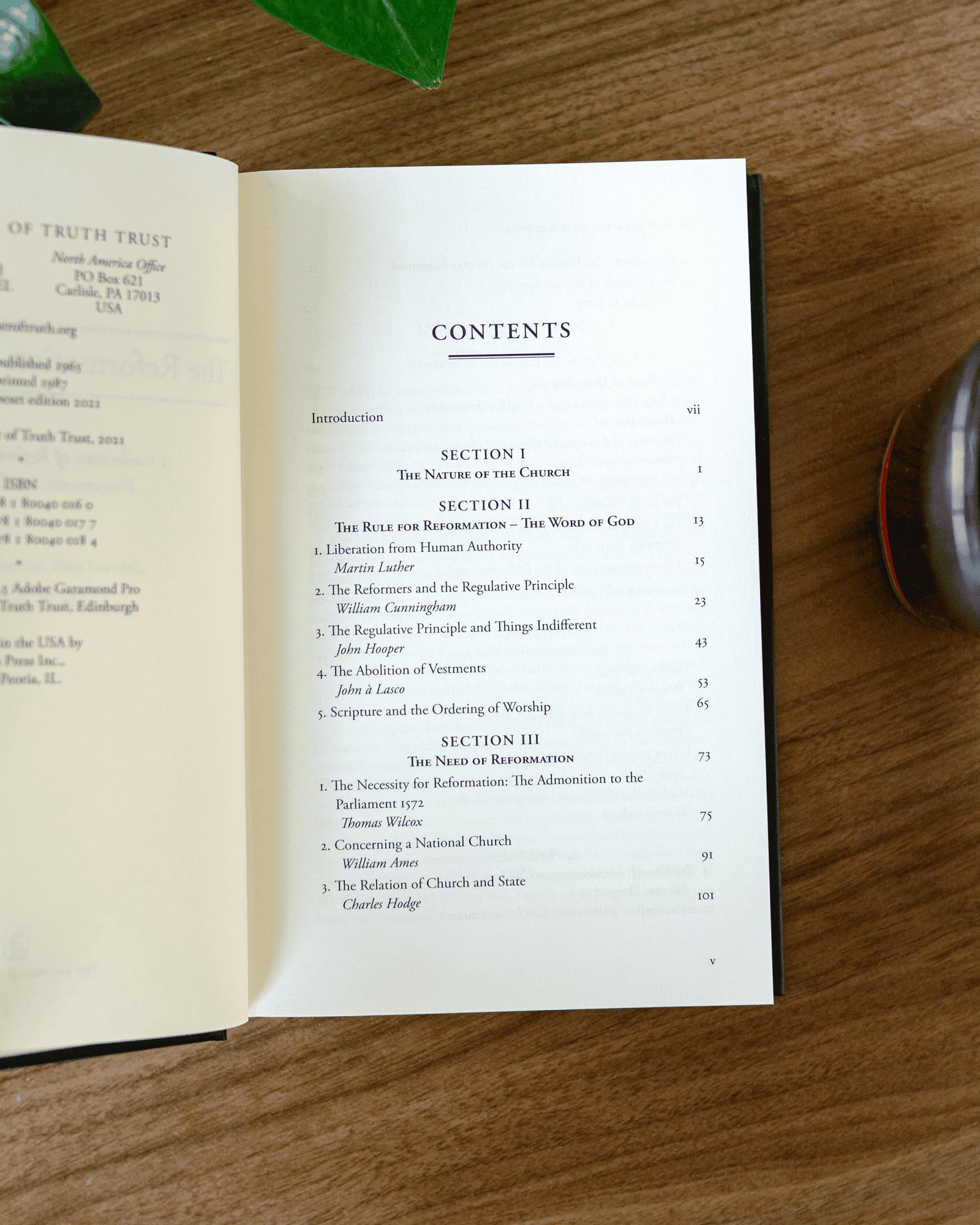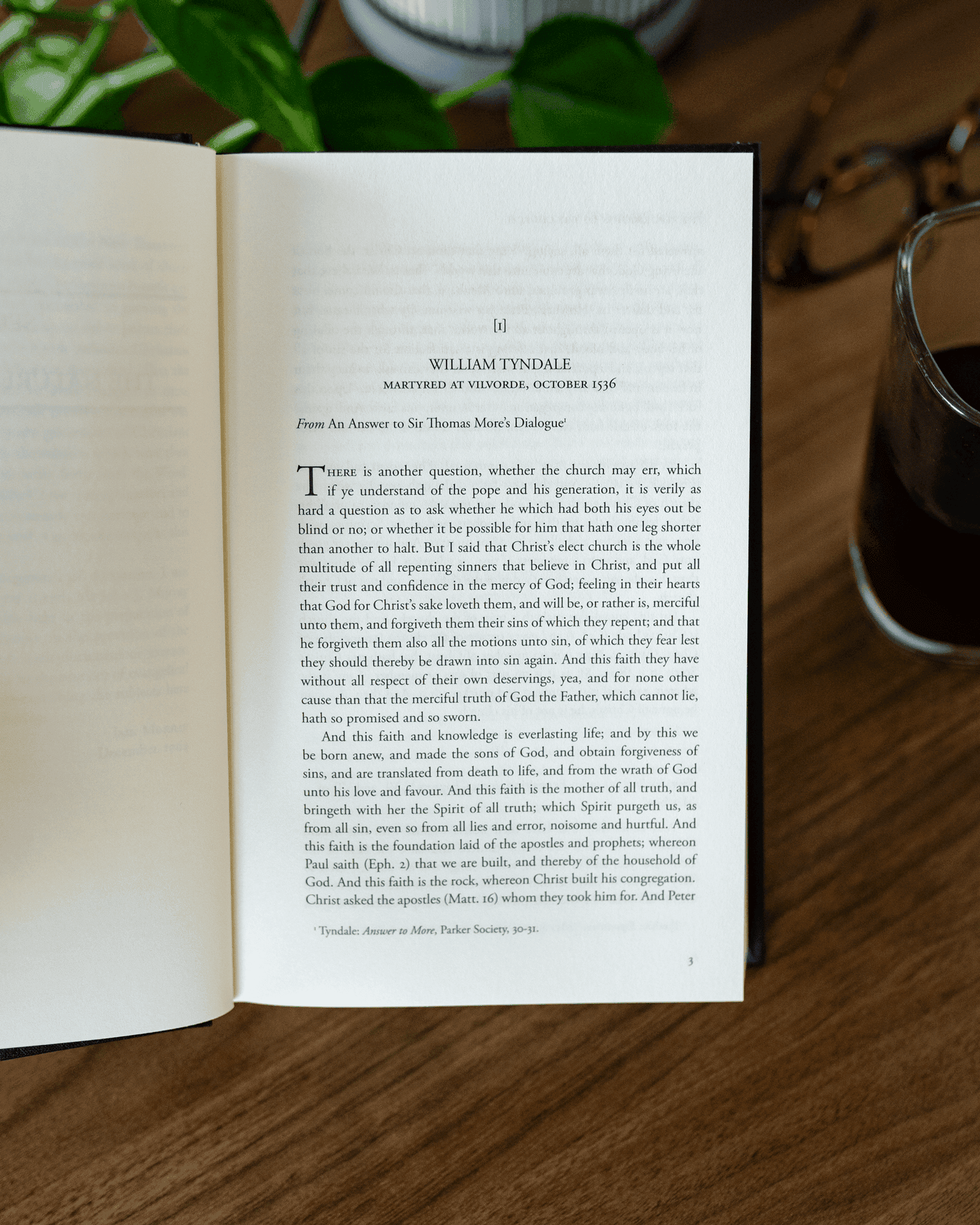Reformation Of The Church
A Collection of Reformed and Puritan Documents on Church Issues
| Weight | 0.50 kg |
|---|---|
| Dimensions | 21.5 × 13.6 × 2.3 cm |
| ISBN | 9781800400160 |
| Binding | Cloth-bound, eBook (ePub & Mobi), Cloth-bound & eBook (ePub & Mobi) |
| Format | Book |
| Page Count | 416 |
| Original Pub Date | 1965 |
RETYPESET, CLOTHBOUND EDITION
Book Description
The nature and life of the church is one of the most crucial issues facing Christians in the closing years of the twentieth century. Questions of ministry and liturgy, authority and freedom, appear in a wide variety of guises throughout the world-wide church. Relativism and uncertainty seem to be as common in the church as in the world. Many Christians wonder whether there is any way forward.
In this context, The Reformation of the Church is an invaluable aid. An anthology of documents, drawn largely but not exclusively from the sixteenth and seventeenth centuries, it presents in a readily accessible form the finest thinking of the reformed fathers on authority and freedom, the need for reformation, the nature of the government, unity and membership of the church of Jesus Christ.
Warmly welcomed when first published in 1965, and widely use since then, these documents provide invaluable material for ministers, elders, leaders, students and all Christians who are concerned to see Christ’s church fulfill her God-given role at a critical juncture in her history.
Table of Contents Expand ↓
| INTRODUCTION | 7 | |
| SECTION I | ||
| THE NATURE OF THE CHURCH | 15 | |
| SECTION II | ||
| THE RULE FOR REFORMATION — THE WORD OF GOD | ||
| 1. | Liberation from Human Authority | 30 |
| Martin Luther | ||
| 2. | The Reformers and the Regulative Principle | 38 |
| William Cunningham | ||
| 3. | The Regulative Principle and Things Indifferent | 55 |
| John Hooper | ||
| 4. | The Abolition of Vestments | 63 |
| John a Lasco | ||
| 5. | Scripture and the Ordering of Worship | 75 |
| SECTION III | ||
| THE NEED OF REFORMATION | ||
| 1. | The Necessity for Reformation: The Admonition to Parliament 1572 | 85 |
| Thomas Wilcox | ||
| 2. | Concerning a National Church | 99 |
| William Ames | ||
| 3. | The Relation of Church and State | 107 |
| Charles Hodge | ||
| 4. | Episcopacy: The Petition for the Prelates Examined | 127 |
| 5. | The Grounds of Nonconformity | 151 |
| Edmund Calamy | ||
| SECTION IV | ||
| NEW TESTAMENT CHURCH GOVERNMENT | ||
| 1. | The Book of Discipline 1587 | 178 |
| 2. | A True Description of the Visible Church 1589 | 196 |
| Henry Barrow | ||
| 3. | The Form of Presbyterial Church Government 1645 | 207 |
| Westminster Divines | ||
| 4. | The Cambridge Platform 1648 | 234 |
| 5. | The Savoy Platform 1658 | 276 |
| 6. | The Difference between Independency and Presbytery | 285 |
| Jeremiah Burroughs | ||
| 7. | A Presbyterian View of the Difference with Independency | 294 |
| 8. | The Heads of Agreement 1691 | 301 |
| SECTION V | ||
| THE UNITY OF THE CHURCH | ||
| 1. | The Way to Peace | 314 |
| Walter Cradock | ||
| 2. | What We Are to Bear with in Others | 326 |
| Jeremiah Burroughs | ||
| 3. | Union among Protestants | 345 |
| John Owen | ||
| 4. | The Scandal of Division among the Godly | 358 |
| James Durham | ||
| APPENDICES | ||
| 1. | The Church Membership of Children | 383 |
| Thomas Shepard | ||
| 2. | Episcopalian Writers on Church Government | 410 |
More items to consider:

Description
A Collection of Reformed and Puritan Documents on Church Issues’ with introductory notes. 416pp.

Description
A Collection of Reformed and Puritan Documents on Church Issues’ with introductory notes. 416pp.

Evangelicalism Divided
A Record of Crucial Change in the Years 1950 to 2000
Description
A Collection of Reformed and Puritan Documents on Church Issues’ with introductory notes. 416pp.






Tyler Rutherford –
The Reformation of the Church contains documents from Godly men who were passionate about the authority of the Word of God, who wanted greatly to see their congregations know and love Jesus Christ, and wanted the Church to be brought to its knees in obedience to God. It is a wonderful anthology of the sweet yet bold declarations of the reformers and puritans. Not only does this collection of documents convict, but it also encourages. It gives us examples of how they faithfully dealt with the issues they faced and equips us to do the same.
This book is perfect for those who want to start reading the Reformers and Puritans. The printing press made these historical documents accessible to our ancestors and us here today as we dive into the paths of old. When we are frustrated or confused with where the Church is today, let us be reminded not to blaze new ways forward, but look back to old paths.
Ben House –
The Reformation of the Church: A Collection of Reformed and Puritan Documents on Church Issues, edited by Iain Murray is published by Banner of Truth.
Let’s face it, some books call for a long, hard slog. I love page turners, meaning those books that are hard to put down. I find myself wanting to race to the end and yet dreading that time when the book is finished. Some books gain momentum as the reader progresses. I told my students who were assigned to read The Brothers Karamazov that the book would pick up the pace after the first 300 or 400 pages. (That is actually more true of other lengthy novels.)
But some books are hard reads. Some books demand commitment. Some books are a page-by-page, chapter-by-chapter task to read.
Yet, the slogging through a book is often needed. No, not everyone needs to slog. No, not every slog is worth the effort. And NO, NO, NO, a slog is not what is needed at the bedside for relaxation.
The Reformation of the Church is a slow, weighty, challenging read that is worth the slog. There are plenty of books out there that diagnose church problems, that recommend church strategies, that counsel and advise pastors and elders, that give quick easy encouragement to church leaders, and that are easy, teachable, sharable nuggets of help to all of us living in the world of church life. I have profited from many such books.
But our churches today are the products of long, hard, difficult battles over theology, liturgy, polity, and outside forces. The Reformation was not just about Martin Luther rediscovering the experience of personal salvation. His was the first (or arguably the 500th) domino to fall in a series that led to church and world-changing consequences for several centuries, including our own.
The essays in this book deal with some testy issues of days past that are not seemingly relevant to our times. The ministerial attire of English pastors was a battleground issue. Seems strange to me because I see good and godly pastors whose clothing styles range from overly casual to well-dressed to robes. But surplices and cassocks riled men of Puritan temperament.
That issue is not one where we see the lines clearly drawn today. Some of my Anglican pastor friends preach solid sermons, as do my more causally dressing pastor friends. But there was a need in the purifying battles of the post-Reformation period for reforms to be root and branch. We can all agree on the root reforms more easily than the branch reforms.
The chapter I am currently reading is on the topic of bishops and episcopacy. For clarification, I am a Presbyterian with low views of presbytery connections who is a part of a Southern Baptist church that seems to have no views of denominational connections. (Long story there that I will forego telling.)
“Bishops” is a biblical word that seems to be wrongly used by some and ignored by others. I am constantly astounded by churches that proclaim adherence to the Bible as the truth, but they ignore Biblical teachings and examples regarding ministry. Churches today often have a pastor and a staff of others that includes music ministers, assistant pastors, associate pastors, youth pastors, senior pastors, etc.
But what about elders? The eldership is not a vaguely mentioned, scarcely noticed concept in the Bible. The Reformers, the Puritans, the Covenanters, and their American heirs would never have skipped past such issues and raced on to make plans for a summer softball league. And the churches are groaning because we don’t have proper, Biblical leadership. And head pastors are flailing and failing because we have elevated their office to a multitasking monstrousity.
The Reformation of the Church is not going to be a chapter-by-chapter resource for quickly solving church problems. Most of what I as a former pastor and you as a pastor or layman are facing will not show up in black and white print in this book.
So why read it? Part of our problem today is simply that—it is a problem today. We have no historical depth, no rooted convictions, no history to guide us (other than last year’s business meeting minutes). We are thinking like Moderns. That also means that we are not thinking at all.
The Reformation of the Church should be either assigned as a whole or in part for students seriously studying church history. (Okay, that sold a few copies.) But men training for the pastorate should also read it. (Sales bumped up a bit.) The huge numbers of wide-eyed Christians who are part of “worship teams” should also read it in order to find the Reformation and Puritan roots of “worship teams.” (I don’t expect any rush to purchase from that statement.) The Christian in the pew might be okay with focusing on issues other than those in this book, but that is true only if he or she is in a church where the leadership understands this book.
One other reason for reading this book: Iain Murray is the editor of this work. He is the best popular church historian and biographer of our time. His many books have laid out the names and stories of many great leaders in church history particularly in the British Isles. His biographies of Martyn Lloyd-Jones and Jonathan Edwards are classics. His labors with Banner of Truth are sterling.
So, prepare to slog through the book. Read slowly and wonder how the seemingly arcane discussions of the past reveal weaknesses today that you and I have not taken seriously. This won’t necessarily be an easy read, but it will be profitable.